Chapter 4, Part 27
In the highlands of Sulawesi, far from the coastal communities of the Bugis and Makassarese peoples, live an agricultural society who still hold onto their ancient traditions. Called “To Riaja”, People of the Mountain, by their seafaring counterparts, the Torajan people were largely ignored for a long time both by the Dutch – who colonized much of the squiggly k-shaped island – and by the Bugis community – whose seafaring skills brought them as far as Madagascar between 200 BC and 500 AD.
A theory suggests that the Torajans are the descendants of the people who left the Gulf of Tonkin, in modern-day northern Vietnam and southern China, and settled in many corners of Southeast Asia. The proponents of this theory point out the shape of Torajan house roofs which resemble a boat, a rather intriguing fact regarding to the community’s dwelling in the highlands. Unlike the Batak people in Sumatra who saw European missionaries coming to their land to preach the gospel in the 19th century, Christianity only reached the Torajans in the early 20th century, introduced by the missionaries from the Dutch Reformed Church. Contrary to the Spanish and Portuguese whose global exploration was partially driven by the mission to spread Catholicism, the Dutch were more pragmatic, focusing merely on business interests instead. Therefore only after the dissolution of the Dutch East India Company (VOC) at the end of the 18th century did the Dutch begin Christian missions in the archipelago.
Fast forward to the 21st century, James and I are on our way to the land of the Torajans from Makassar, South Sulawesi’s provincial capital. During the first half of the nine-hour overland journey, the region’s picturesque as well as intriguing karst hills – considered among the most expansive in the world – unfold to our right side. Inside the caves, scattered beneath the rugged surface of the towering hills, lie treasures dating back to the Pleistocene era. An article in an Indonesian magazine describes one of the caves, hidden in a mountain over 1,000 steps above the valley floor, as a prehistoric art gallery, containing hand stencils and depictions of babirusa (wild boar with upward-curving tusks – seemingly created by evolution’s playful twist), pigs, deer, and a boat. Some were drawn more than 35,000 years ago, making them among the world’s oldest rock paintings.
Along our way to Parepare, roughly halfway between Makassar and Rantepao – the capital of the regency of North Toraja – Bugis stilt houses, each decorated with crisscrossed wooden beams above the facade, dot the landscape. In each village, one or more small mosques stand near the houses. However, as we are approaching Makale, the capital of the regency of Tana Toraja (the main regency in the Torajan highland before North Toraja was formed in 2008), a tall statue of Jesus looms from the summit of a nearby mountain. We have now entered a Christian land. The statue itself was created by a Muslim man from Minangkabau, which makes me think of Indonesia’s biggest mosque which was designed by a Christian Batak.
Instead of mosques, now every where I look I only see churches. Meanwhile, Tongkonans – Torajan traditional houses with boat-shaped roofs and elaborate decorations – dominate the landscape. Just before sunset, we finally arrive in Rantepao, a small town with a pleasant temperate climate, a stark contrast to Makassar’s hot and humid air. As night falls, we head out for dinner and find a modest stall by the street. Having hot baro’bo dalle (rice congee with corns and other vegetables) for dinner at a place where the staff is genuinely friendly, our first night in the land of the Torajans ends on an unexpectedly warm note.
After a long and nice sleep, the next morning we head to Lemo, a village peppered with rocky cliffs surrounded by paddy fields. On the face of a cliff, niches were carved out as a final resting place for the dead. The stone burial is a practice that has been carried out by the Torajans for generations, an integral aspect of their traditional belief, Aluk Todolo. In fact, by the mid-20th century only 10% of Torajans had embraced Christianity, while the rest still adhered to the local religion. However, between the 1950s and the early 1960s when Indonesia’s independence was still at its infancy, South Sulawesi was a hotbed for an insurgency aiming to establish a conservative Islamic state in the province. Feeling threatened by the imminent hostilities directly south of their lands, a mass conversion into Christianity occurred among the Torajans. Daniel, our local guide, tells us that today 80% of Torajans are Christians, 15% are Muslims, and the rest still hold onto Aluk Todolo. However, it is evident that centuries-old traditions are still very much alive in this highland community regardless of the people’s faiths.
Below the burial niches on the rock are Tau Tau, wooden effigies of deceased men and women. Their arms stretched out, a gesture to deter anyone from taking anything from the grave. In modern times, the stone burial tradition is still conducted based on a pre-Christian social system where people from the upper and middle classes are buried in rock niches, while those from the lower class are buried in the ground. In spite of Tau Tau’s grave warning, unfortunately they are highly sought after by art collectors who are willing to pay an astronomical price to procure them.
Death is in fact, and quite ironically, the center of life for the Torajans. Upon hearing our story about the Spice Odyssey, Daniel tells us that the Torajans cannot travel like we do because their money will certainly be spent out for funerals. Whenever an important member of a family dies, relatives from all across the country and abroad will return to their homeland. Meanwhile, those who live in Tana Toraja – traditionally comprising lands both in Tana Toraja and North Toraja regencies – set up temporary accommodations for the homecoming Torajans.
Each family contributes one or more water buffaloes for the funeral, costing 40 million rupiah (around US$3,000) each. The highly revered albino water buffaloes cost even more, between 700 to 900 million rupiah (US$52,500 – US$67,500) each – practically only wealthy members of the family can afford to buy them. With the same amount of money to buy an albino water buffalo, one can build a Tongkonan or buy several minivans. Daniel further adds that rich people typically have at least two albino water buffaloes slaughtered at their funerals. The expense still goes even higher as a Tau Tau can cost about 20 million rupiah (US$1,500) each.
“The total cost for a funeral can be more expensive than the amount of money one spent throughout his/her entire life,” Daniel concludes.
When we are at Lempo where the majestic landscape of the Torajan highlands with ripening paddies are presented before our eyes, I overhear another guide’s explanation to his client about water buffalo’s significance to the Torajans. Historically, in Toraja water buffaloes have always been the most expensive animal, and sacrificing them for the elders in the family is considered an act of respect. However, today people sacrifice them also for pride, and to meet the high demand, water buffaloes from the islands of Java, Sumbawa and Sumatra have to be brought in.
But in a society where death is treasured, and costs the family members their treasures, water buffaloes will remain a currency, for demand will unlikely subside.
~ End of Chapter 4 ~
Click here for the full list of stories from the Spice Odyssey series.
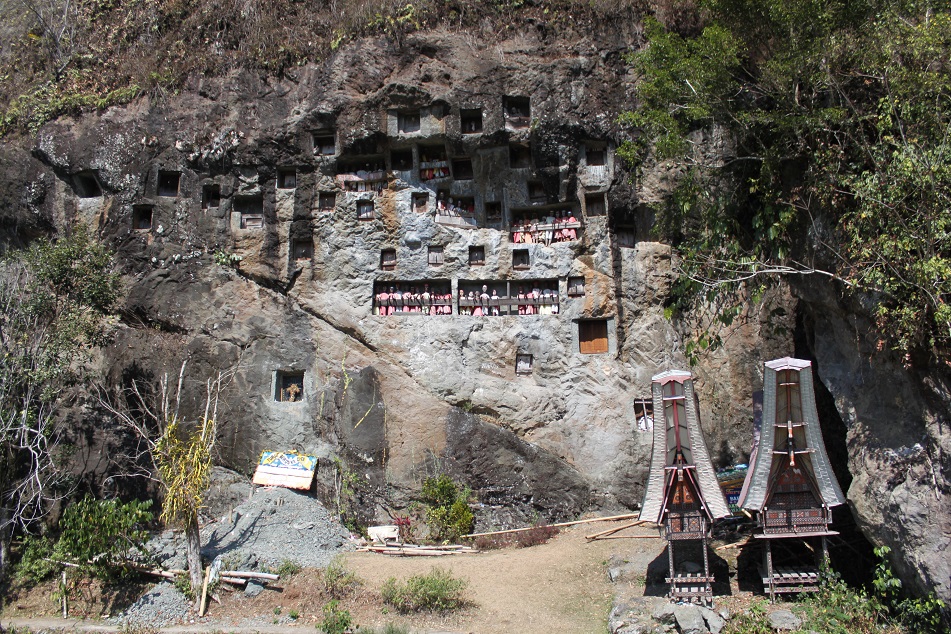
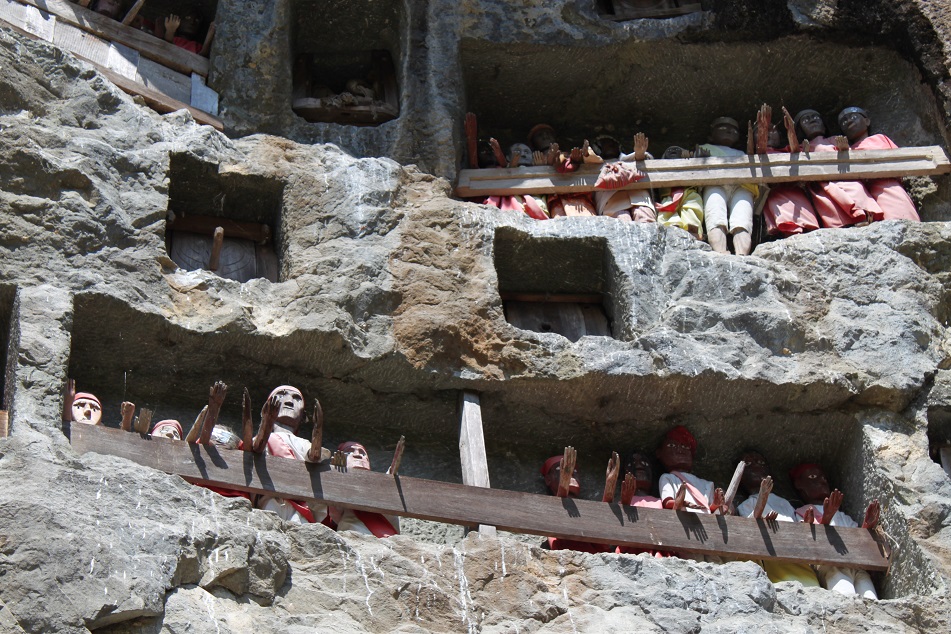

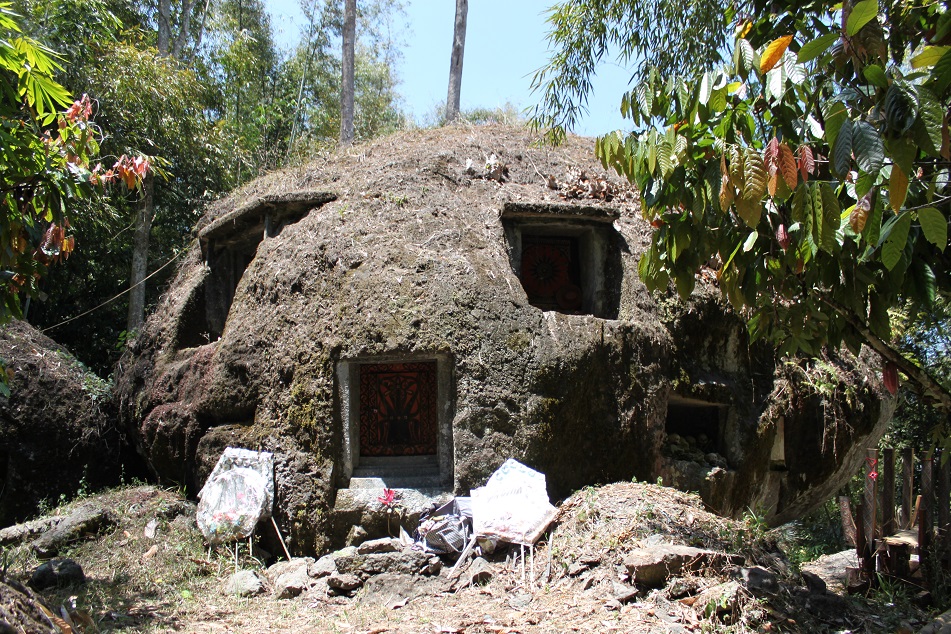
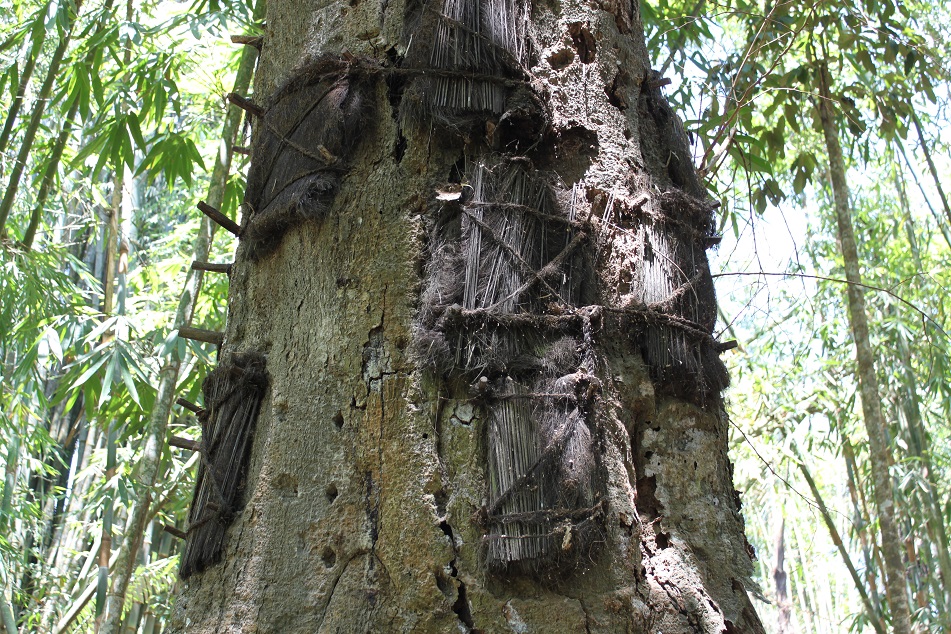
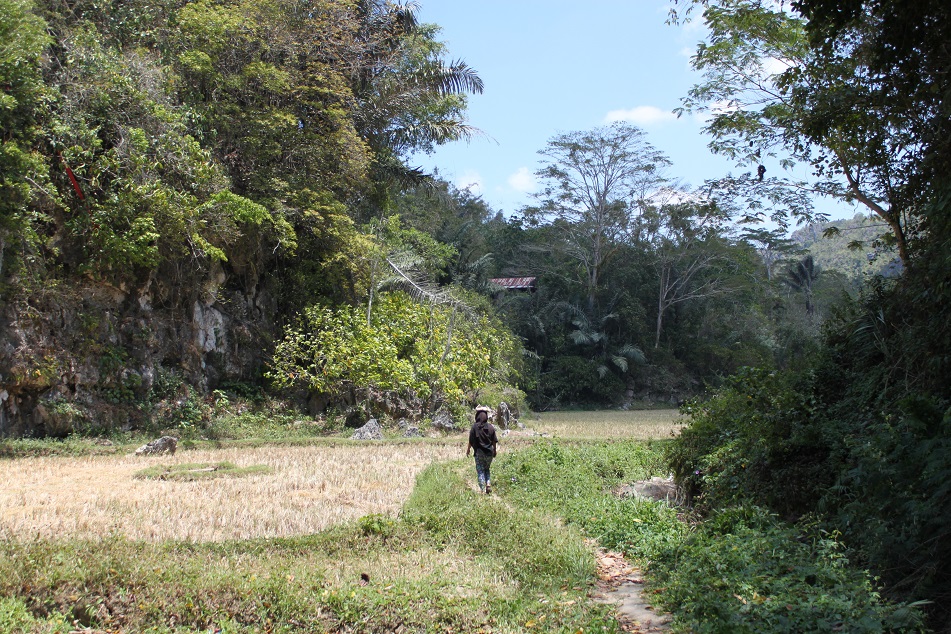
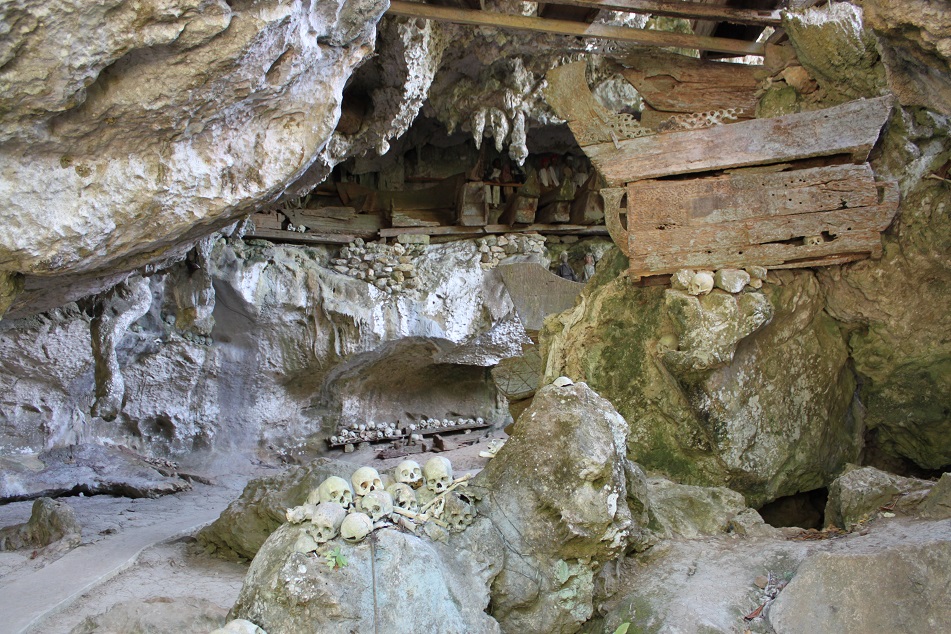
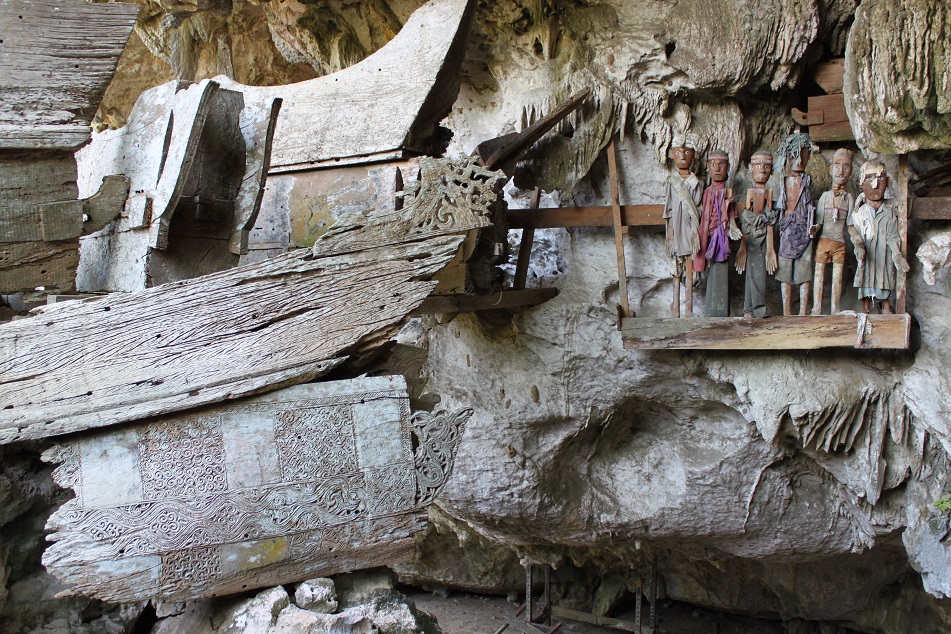

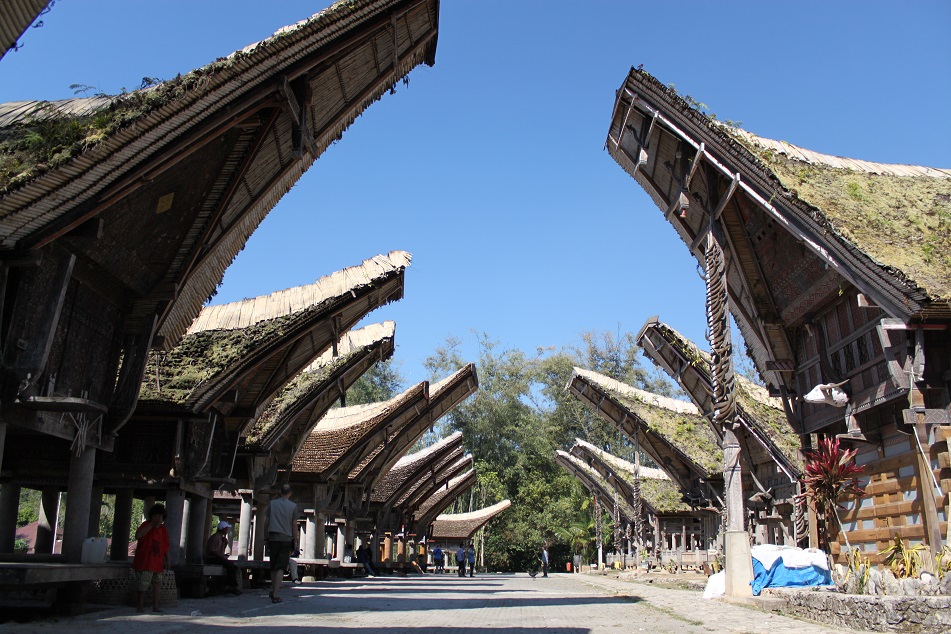
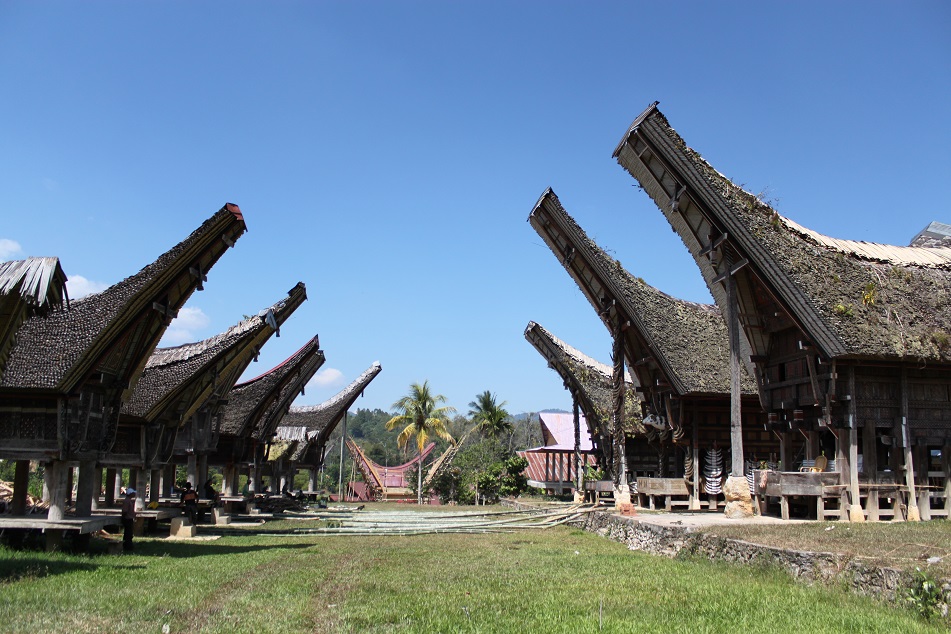

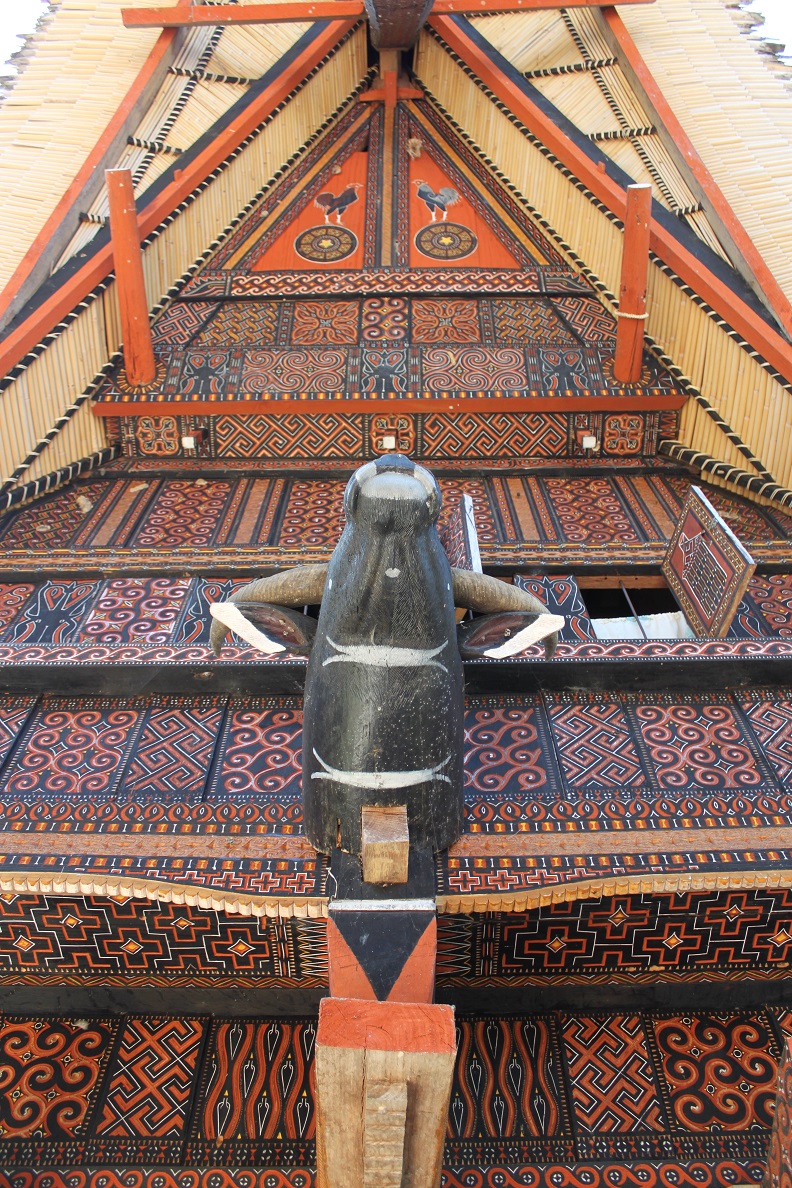
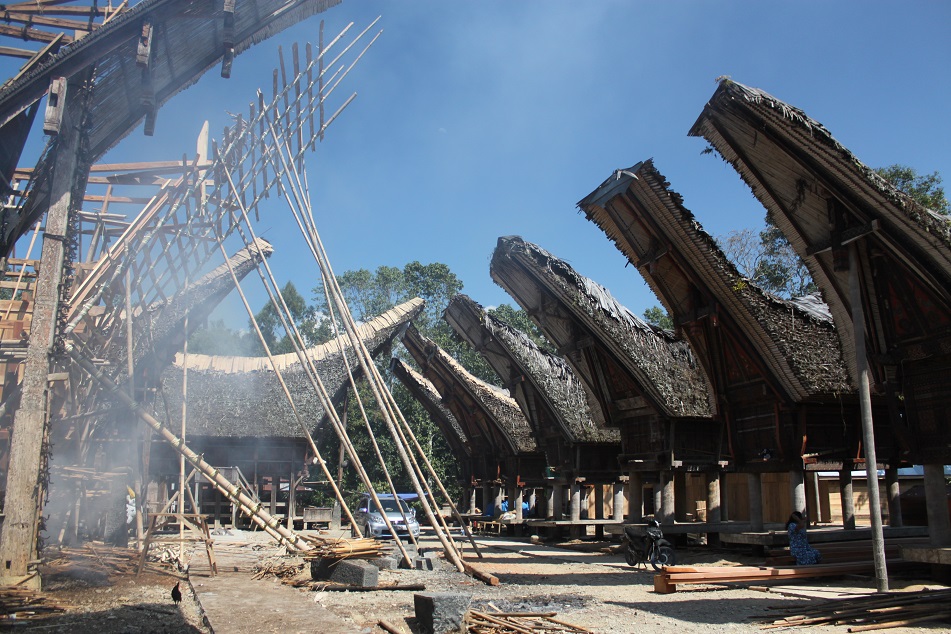
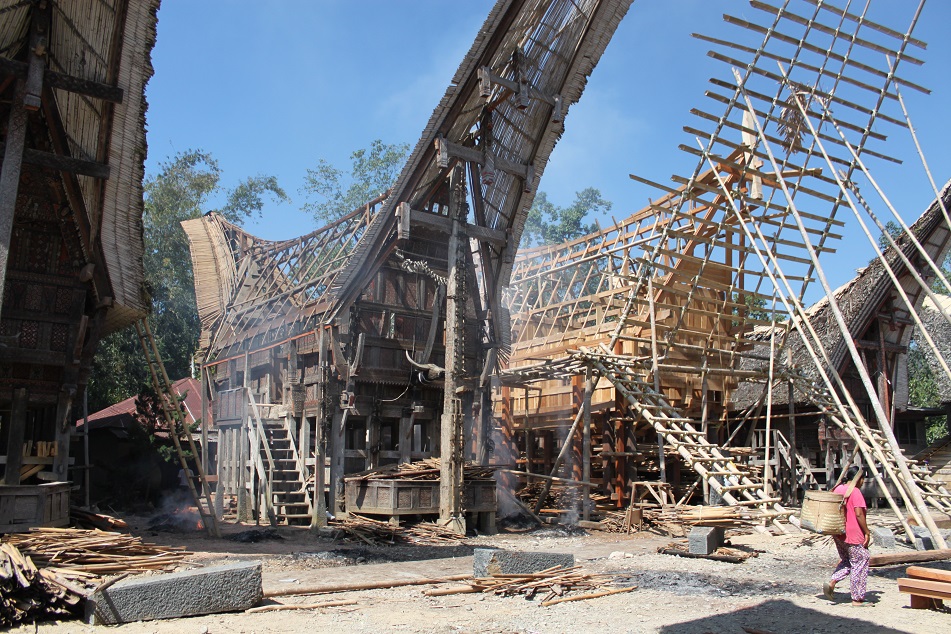

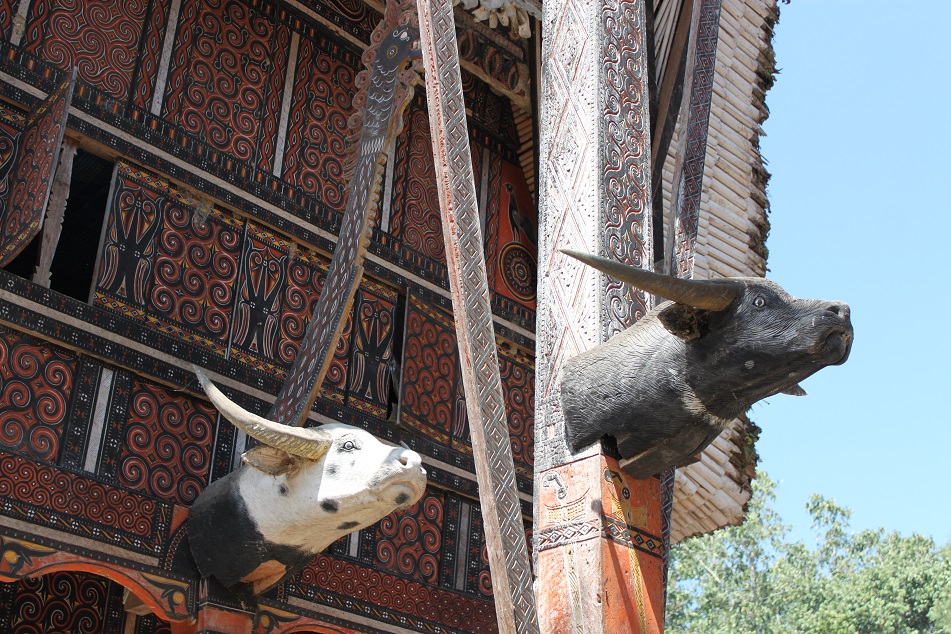

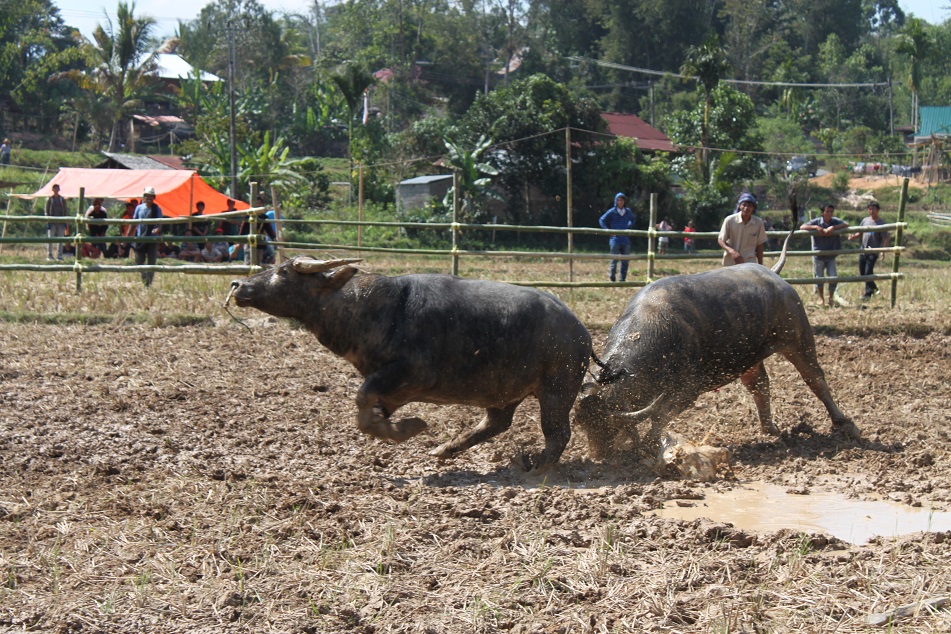
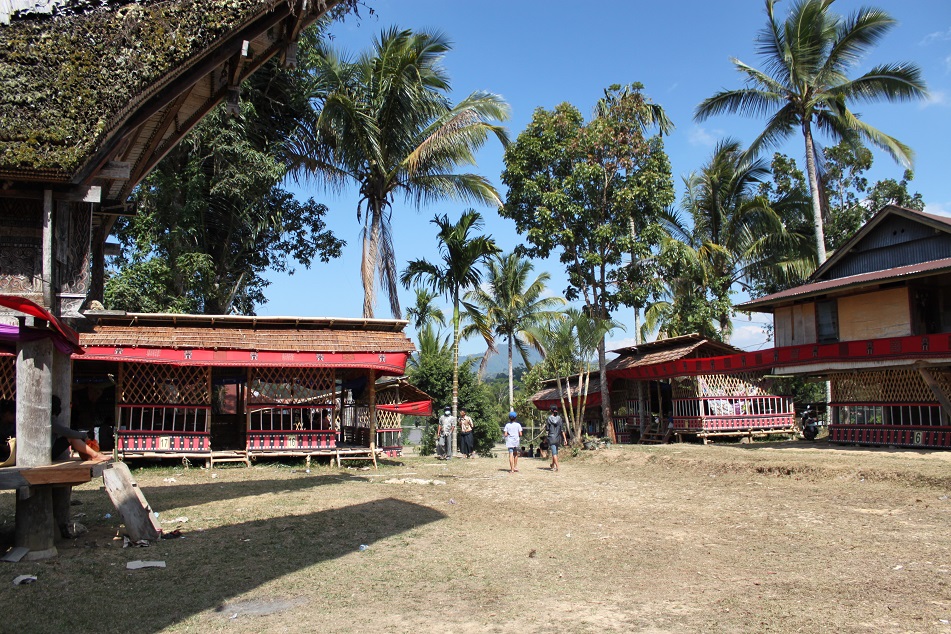

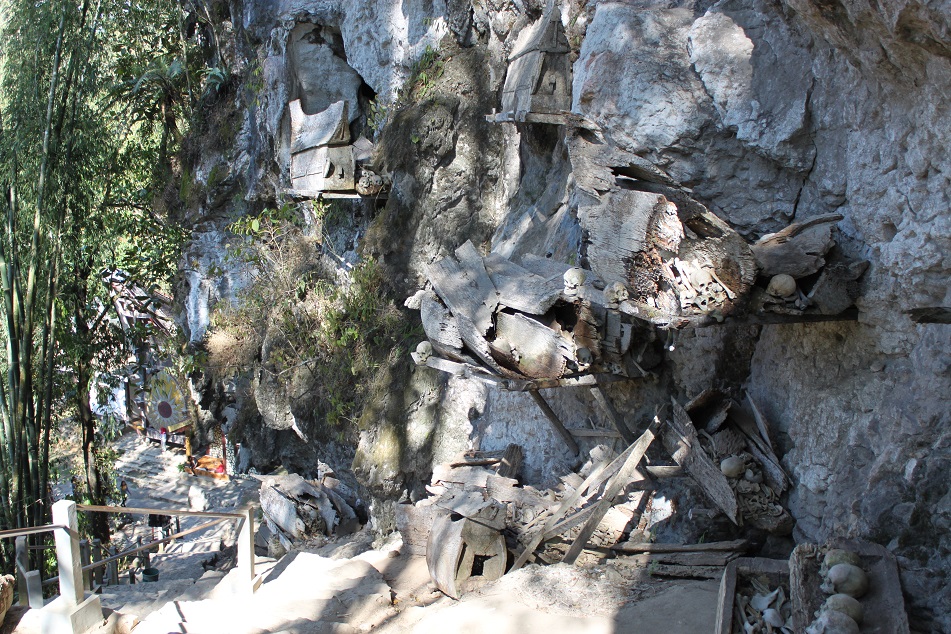
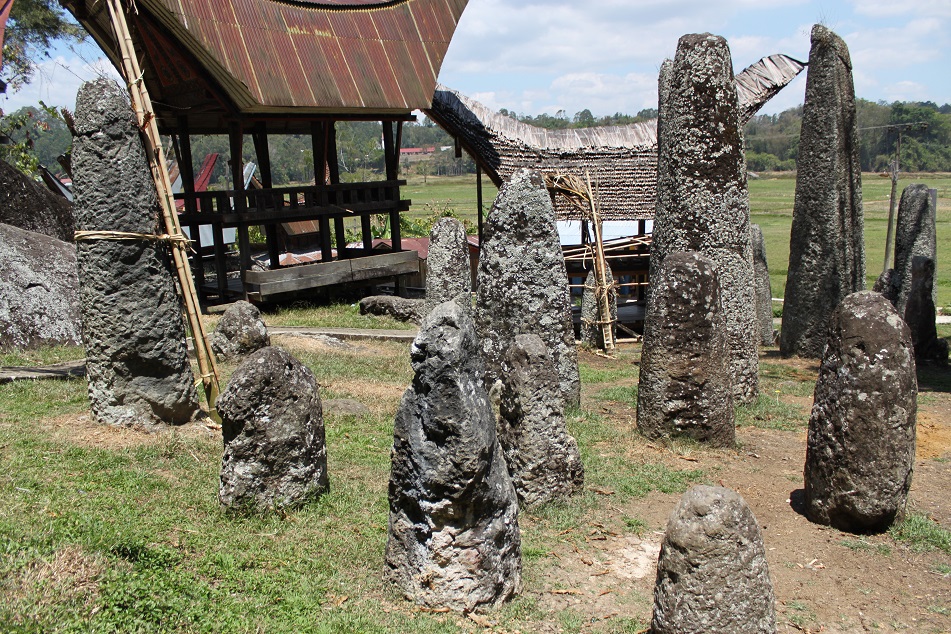

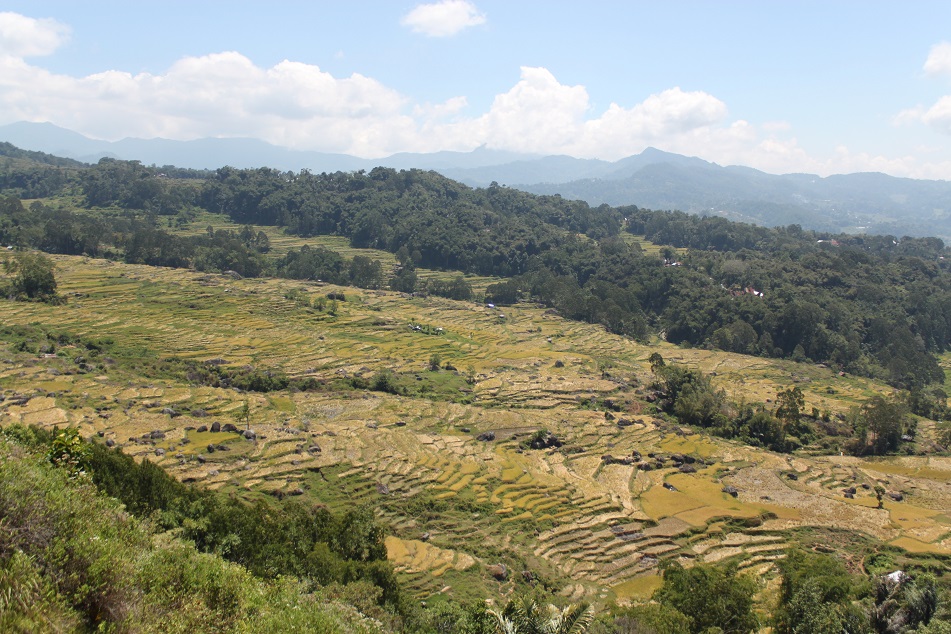
wow! so interesting !!
LikeLike
Tana Toraja really is an interesting place to visit, not only for its beautiful landscape, but also its unique culture.
LikeLiked by 2 people
Interesting and beautiful
LikeLike
Teşekkür! Tana Toraja is among the most intriguing places I’ve been to in Indonesia.
LikeLiked by 1 person
I think it is a place that must be seen. I hope I can go there someday. Thanks for sharing
LikeLike
I hope you’ll get the chance to visit Tana Toraja sooner than later. Thanks for reading!
LikeLiked by 1 person
i hope so too 🙂
LikeLike
Absolutely amazing photostory, Bama! I have never seen anything like this.
LikeLike
Thanks Dina! Isn’t this land fascinating? Death is so important for the Torajans they will do anything to make sure their loved ones get a lavish funeral.
LikeLike
So very interesting. To get a glimpse of the world different culture is so rewarding.
LikeLike
Bente, I think you would love this place. There’s always something beautiful and different everywhere you look.
LikeLike
Fascinating! Now my travel taste buds are itching.
LikeLike
Thanks for reading, Mallee. Have you been to Sulawesi? It’s an island I really want to explore further.
LikeLiked by 1 person
No, I haven’t. I’m captivated by your post and can see why you’d want to go back. Haven’t decided on my next trip yet!
LikeLiked by 1 person
Jadi pengen ke Toraja! Thanks for infos. Check mine? Bout Jakarta.
LikeLike
You’re welcome. I haven’t been to all over Indonesia, but I believe Tana Toraja is among the most fascinating places in the country.
LikeLike
First – I love the new template for your blog. Very classy.
This looks like an fascinating part of your country – their traditions, and way of life. Every post you make me more and more want to visit Indonesia – there’s so much to see and experience.
Alison
LikeLike
Thanks Alison! Indeed, so much to see in Indonesia one would need a couple of visits to really understand the country. When you have plans to come back, please drop a message. I would be more than willing to share some information on interesting places to visit.
LikeLiked by 1 person
I read and saw documentaries about this place but I didn’t know you could visit them as a tourist?
LikeLike
Actually everyone is welcome not only to visit Tana Toraja, but also to attend the funeral ceremonies. The locals will be more than happy to show curious visitors their unique traditions.
LikeLiked by 1 person
Fascinating – and beautiful photography.
LikeLike
Much appreciated! If you visit Indonesia and have enough time to explore the country, make sure not to miss Tana Toraja.
LikeLike
Fascinating. I will certainly include this place in any future plan to explore more of Indonesia. Do the Torajans worship their dead, and what do they believe about the afterlife?
LikeLike
They do believe about the afterlife, but as far as I know they don’t worship the dead. Hope you’ll get the chance to visit this part of Indonesia one day!
LikeLike
I know it’s simply a matter of cultural bias, but I find it kind of sad that these people are so preoccupied with death and with spending that kind of money on death and funerals. Nevertheless, I find this place visually fascinating, and I’d love to visit the area!
LikeLike
Maybe some of the Torajans find it sad that our lives are preoccupied with whatever we think matters. But I can understand why you think that way because I was also shocked by how much they would go for their funerals.
LikeLiked by 1 person
Totally agree. I’m aware it’s my own biased mindset and that we have our own cultural norms that would seem weird or sad to others (lots actually!). 🙂
LikeLiked by 1 person
Absolutely fascinating. Their obsession with the afterlife resembles that of ancient Egyptians. I remember reading your earlier posts on Sulawesi and thinking I have to see that for myself! Beautiful photos, especially of the Tongkonan’s facade.
LikeLike
You’re right about the similarity between the Torajans and the ancient Egyptians. I guess you would enjoy Sulawesi as much as I did, Madhu — although to date I’ve only been to South Sulawesi. So many things to see, so little time, as always. Thanks Madhu!
LikeLike
Tana Toraja is one of those places that really must be seen to be appreciated. The tau tau on the cliffs, the houses, the whole countryside – it is strange and beautiful and unique and can’t adequately be captured in photos (although you have done a great job here.)
Did you visit a funeral while you were there?
LikeLike
I still remember that photo of you and Kristi behind the skulls, also the story how she was chased by a buffalo despite her best effort not to see the slaughter. Is she still traumatized by that experience? There was no funeral when we were there, but at least we could get a glimpse of how festive it would be as we were only days ahead of a big one. Thanks Jeff! Tana Toraja not only was colorful, but also very photogenic. And the people were really friendly.
LikeLike
Kristi hasn’t eaten meat since! (With the exception of a few bites of pork in Hong Kong with James). Your country is so diverse. It is hard to believe Tana Toraja is in the same country as Java, Bali and Flores.
LikeLike
There’s only one way to deal with it: come back to the place where it started! 🙂 James told me that when we were in Hue, you were in Danang. That was a very narrow miss! Better luck next time.
Speaking of the diversity, even for me the more I learn about Indonesia the more I wonder if I would ever be able to visit at least half of the places I want to see the most in the country.
LikeLike
Very nice
LikeLike
Terima kasih!
LikeLike
Pingback: Food Nationalism | What an Amazing World!
Bama, this is a beautiful post, and one that brings back some fond memories! Tana Toraja is so far one of my favorite places in Indonesia – I found it utterly captivating and the atmosphere so relaxed and welcoming. Contrary to what I initially imagined, I wasn’t creeped out by the tombs and effigies (not to mention the actual skulls and other human bones) in the slightest way. It was more of an educational experience, learning about a culture so different from the ones we grew up in. The hefty price of water buffalo reminds me so much of Sumba, where they are bought and given at weddings rather than funerals.
LikeLike
Much appreciated, James. Exactly how I felt! Those bones and skulls were surprisingly not frightening at all. Maybe because we were there for the culture and food, we put aside any inconvenience one might feel being surrounded by those effigies and coffins. I was really shocked to learn about how much money Torajans spend for funeral-related affairs. Those who are able to buy albino water buffaloes must be very successful businessmen (or politicians!). Speaking of Sumba, it still is among the places in Indonesia I want to see the most.
LikeLike
Fascinating and beautiful photos!
LikeLike
Thanks Jason! Glad you enjoyed this post.
LikeLiked by 1 person
Thank you yet again for a fascinating history filled introduction to a unique destination in the Indonesian archipelago. We first learned of Toraja in Sulawesi a few years ago when we had a bamboo low cost housing business in Central America. Sulawesi it turns out is chockfull of massive construction grade bamboo and because of the logistics and cost of transport, as well as the locals disinterest in commercializing their vast bamboo forest, Sualwesi has yet to become a major player in the worlds bamboo trade. Your photographs of Sulawesi tall houses are breathtaking, especially the close ups. Of course the facades with ornate colors and carvings and designs are impressive but equally fascinating to us, as bamboo people, is the photograph of the bamboo roof cross section. These people are absolute masters at bamboo construction and we cannot wait to visit Toraja when next we are in Indonesia. Thank you for a really beautiful and informative post Bama.
Ben (& Peta)
LikeLike
I had no idea about the construction grade bamboo in Sulawesi, but that shouldn’t have come as a surprise since the locals have been using it to build their houses — like the impressive Tongkonan — for generations. Thank you again for your kind words, Ben & Peta. Hopefully when you come back to Indonesia you’ll have enough time to explore Sulawesi. I myself have only been to the south. Central and North Sulawesi are among the places I want to see the most on the island due to their beautiful landscape, unique cultures, and ancient sites.
LikeLike
Pingback: Thanks for the award! / Blogger reconigition award.. – The Golden Perspective Blog
Pingback: South Sulawesi: From Cave Art to A Modern City | What an Amazing World!
Visiting Tana Toraja and attending a large funeral, way back in 1991, remains one of my favourite and most interesting travel experiences. It is totally unique. Your photos really capture this amazing place.
LikeLike
Wasn’t Tana Toraja enthralling? The culture, the belief, the traditional houses, the food, the landscape, and among the friendliest people I’ve met in Indonesia! Did you see the funerary ceremony? When I was there I was too early for one as the relatives of the deceased had just begun a series of long and complicated rituals and events that could take weeks to complete.
LikeLiked by 1 person
I was re-reading your post (doing research for friends who plan to visit Indonesia next year) and had to marvel again at your photos of Tana Toraja. I also realized I never replied back to you. Yes, we did go to a funerary service. We were the only non-Indonesians there and felt very honoured to be part of the ceremony. The family was so gracious and kind to us. I’ll never forget this experience.
LikeLike
No worries, Caroline. I can imagine the warmth and hospitality of the locals when you were there — Indonesians are generally very friendly people, even more so to foreigners. I guess in your case they were as much curious about you as you were about them.
LikeLike